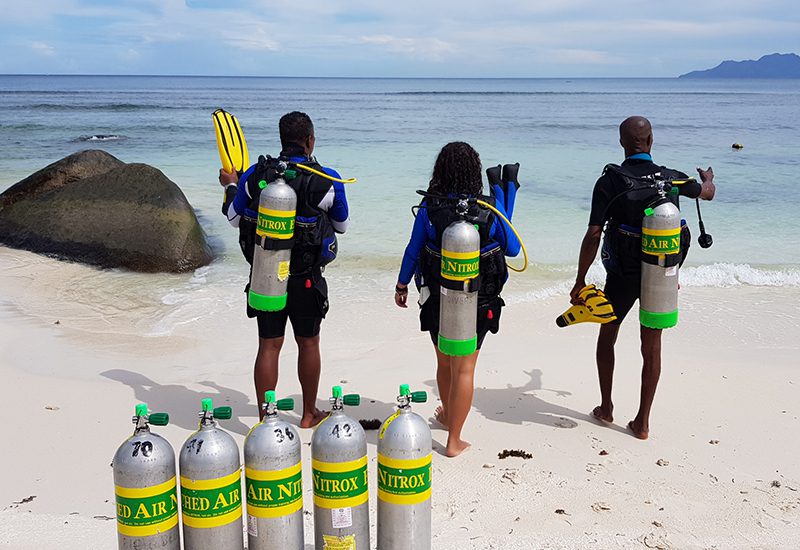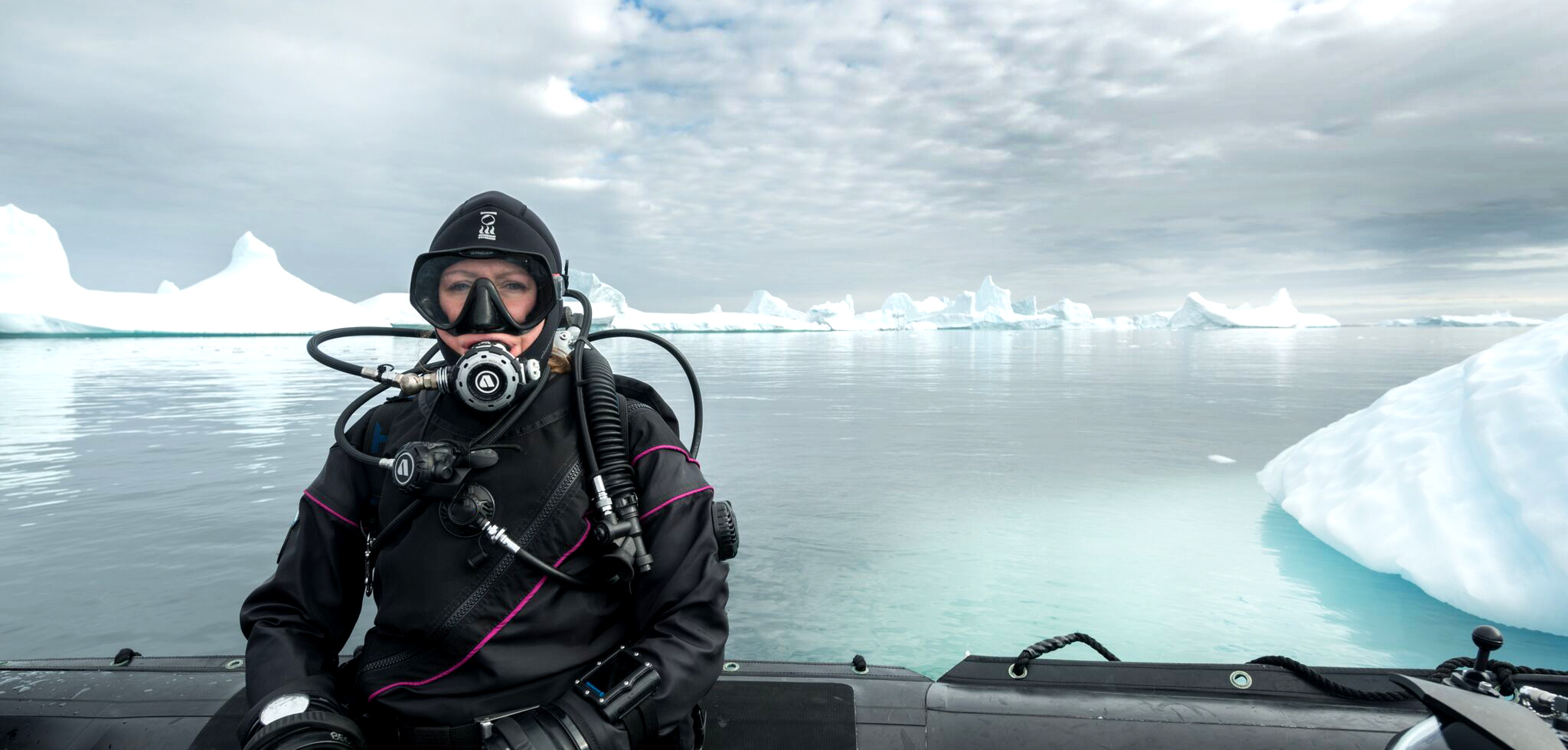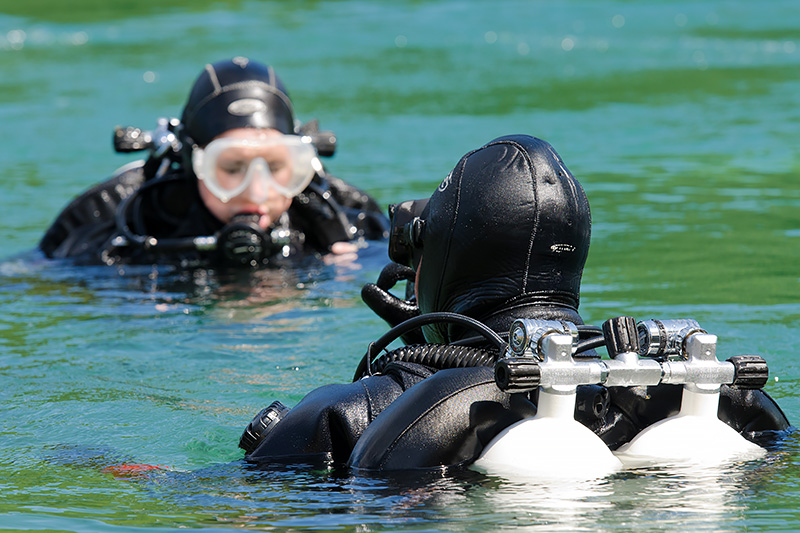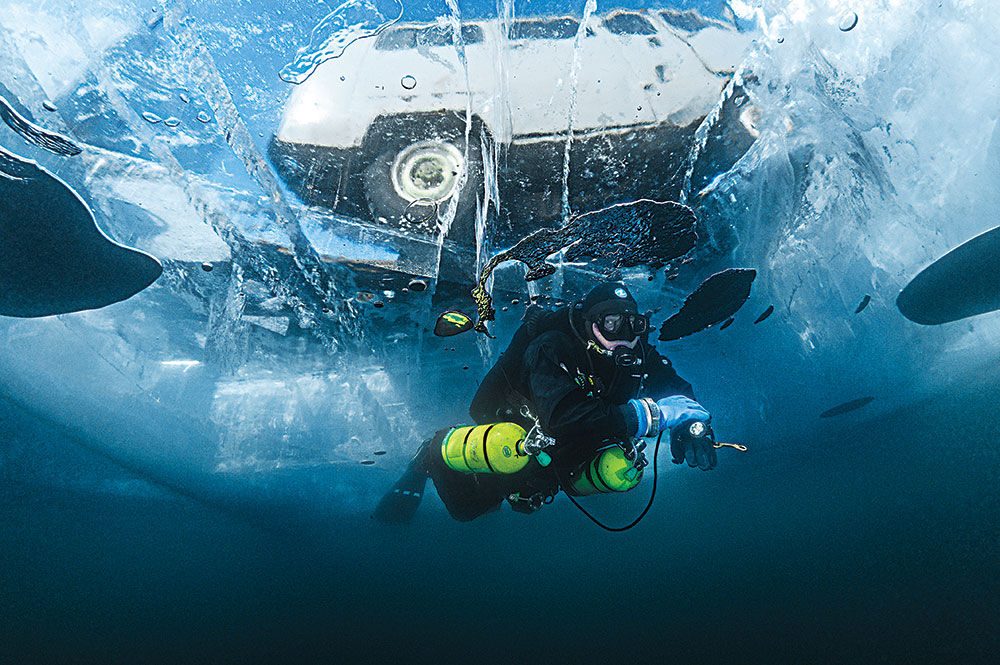
Well, let's dive into Nitrox!
The color of a scuba tank can tell you a lot!

The air inside the classic grey tanks is the same air you breathe on land, composed of roughly 21% Oxygen and 79% Nitrogen. However, the air inside scuba tanks is compressed to a much higher pressure than the air you breathe above water, without this compression, your dive time would be significantly much shorter.
Green and yellow tanks are commonly used for Enriched air (also known as Nitrox or EANx), A breathing gas with a higher oxygen concentration than regular air.
What is Nitrox?
Nitrox is a shortening of Nitrogen and Oxygen. Bingo! Nitrox is a general term for a gas made up of any combination of Oxygen and Nitrogen.
And Enriched Air… Does it mean my air is rich?
In recreational diving terms, enriched air Nitrox refers to any Oxygen / Nitrogen gas mixture with more than 21 percent oxygen.
Simplified: Enriched air has more oxygen than air, which reduces nitrogen percentage.
For example:
- EAN 32: contains 32% oxygen and 68% nitrogen
- EAN 36: contains 36% oxygen and 64% nitrogen
- EAN 40: contains 40% oxygen and 60% nitrogen
During your Open Water Diver course, you learned that the water pressure causes Nitrogen from the air you breathe to dissolve in your bloodstream and tissues when diving. The higher the pressure and more time under pressure, the more Nitrogen dissolves.

Nitrogen's a troublemaker!
Enough air in your tank to continue diving, but have you reached your maximum nitrogen consumption for the dive? We can feel the frustration, as now you need to end the dive due to your no-decompression limits (NDL).
According to the Recreational Dive Planner table, The NDL or No-Stop time for 18 meters is 56 minutes But, Nitrox changes this number!
Diving with Nitrox reduces the amount of Nitrogen entering the body due to the higher oxygen percentage. Weeee! Your NDLs are extended, and in the same situation as before, you would now be able to continue your dive and have an increased bottom time:
- 95 minutes with EAN 32
- 125 minutes with EAN 36
How cool is that!
Now that you are, you're up to speed on Enriched Air Nitrox. It's time to explore why Nitrox diving is the future, and you should take advantage of it, or you will miss out on your future dives.
What are the benefits of Nitrox diving, and why should you take your Enricher Air Nitrox Course?
Let's take a look!
- SAFETY
Less nitrogen absorption means a lesser chance of Decompression Sickness (DCS).
- EXTENDED BOTTOM TIME
The reduced percentage of Nitrogen you breathe with Nitrox allows you to extend your no-decompression time, which means spending more time underwater!
- SHORTER SURFACE INTERVALS
Using Nitrox allows you to absorb less Nitrogen, which means you'll need a shorter surface interval to Off-Gas.
- LONGER REPETITIVE DIVE TIMES
Divers using normal air for repetitive dives end up with shorter dive times, frustrating for avid scubaholics. With Nitrox, you can enjoy longer dive times because your body has less residual Nitrogen.
- REDUCED EXHAUSTION
Nitrox divers often report feeling less tired after dives, this benefit has yet to be scientifically proven, though

What do you learn during the PADI Nitrox specialty?
- What is Enriched Air (NITROX)?
- The benefits and concerns of diving with Enriched Air
- How to dive with Nitrox
- Analyze the gas mixture
- Plan Nitrox dives
- Calculate the maximum depth and bottom time.
- Mark your Enriched Air tanks
- Use specialized Nitrox equipment
- Set a dive computer to enriched air
Learning should be safe, fun, engaging, and hands-on!
That's why our Nitrox Specialty courses not only provide you with all the necessary knowledge and skills for Nitrox diving but also allow you to explore the stunning underwater world with two Nitrox dives supervised by one of our experienced dive instructors who are intimately familiar with the diving sites around world
Visit the best spots to encounter vibrant marine life, and explore coral reefs!
Fantastic vibes are guaranteed. That's how it's going to be!
coralgranddivers.com
دفتر مرکزی :
09120723230 - 09353406305
نمایندگی ها :
تهران : آقای محمودی 09191995344
کرمانشاه : آقای مرزبان 09183596036
قزوین : آقای صفدری 09124815280
گرگان : آقای النگی 09113706913
همدان : آقای حقیقی 09194261418
رزن : آقای زینتی 09120940532
تاکستان :آقای طاهرخانی 09127886114
کردستان: آقای حلیمی 09189786648
(3).jpg)


.jpg)



.png)
.png)
.png)
.png)
.png)